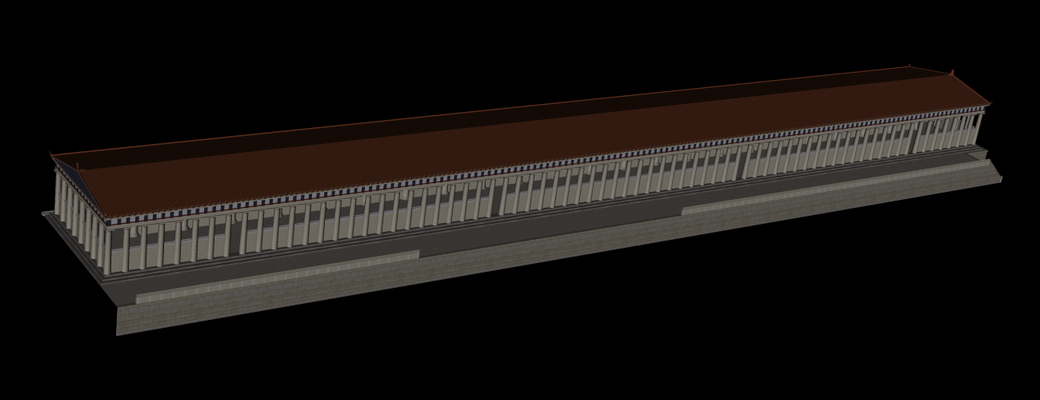The Middle Stoa stands in the Agora during the Hellenistic and Roman periods. The ruins of the Stoa are still visible in the excavation site, and this underlines the fact that the representation rests on rather reliable evidence, as well as on the representations by the excavators, who discovered similarities with the Stoa of Phillip on Delos. We have followed the hypothesis of the excavators, according to which a parapet existed in the intercolumnal spaces only in the edges of the two colonnades.
For the superstructure, and in particular for the clay tiles decorating the rather unadorned entablature, precious clues were provided by the findings discovered in situ, and especially by their representation in De Jong’s water colour drawings [e.g. in Mc Camp II, J., The Athenian Agora, A Short Guide to the Excavations, Excavations of the Athenian Agora, Picture Book no 16, American School of Classical Studies (Princeton 2003), pp. 27, fig. 39], were one can observe all the decorative details.
The two structures lying in the centre of the south square were not represented [see the drawing published in Mc Camp II, J.,
Η Αρχαία Αγορά της Αθήνας. Οι Ανασκαφές στην καρδιά της κλασικής πόλης2 (Αθήνα 2004), pp. 30-31], because these are dated, on the basis of the excavational data, to the late 2
nd or the 1
st century BC, and were apparently destroyed during Sulla’s attack (86 BC). There is, however, a theory that one of these, the east one, could have been rebuilt in the 2
nd cent. AD. The fate of the Middle Stoa after 86 BC is unknown. We have assumed, in accordance with all the published representations of the excavators, that in the mid-2
nd cent. AD it stood in its original form [Thompson, H.A. – Wycherley, R.,
The Agora of Athens. The American Excavations in the Athenian Agora, vol. XIV, American School of Classical Studies at Athens (Princeton 1972), pp. 65-71].
 Middle Stoa, 3D Representation
Middle Stoa, 3D Representation
